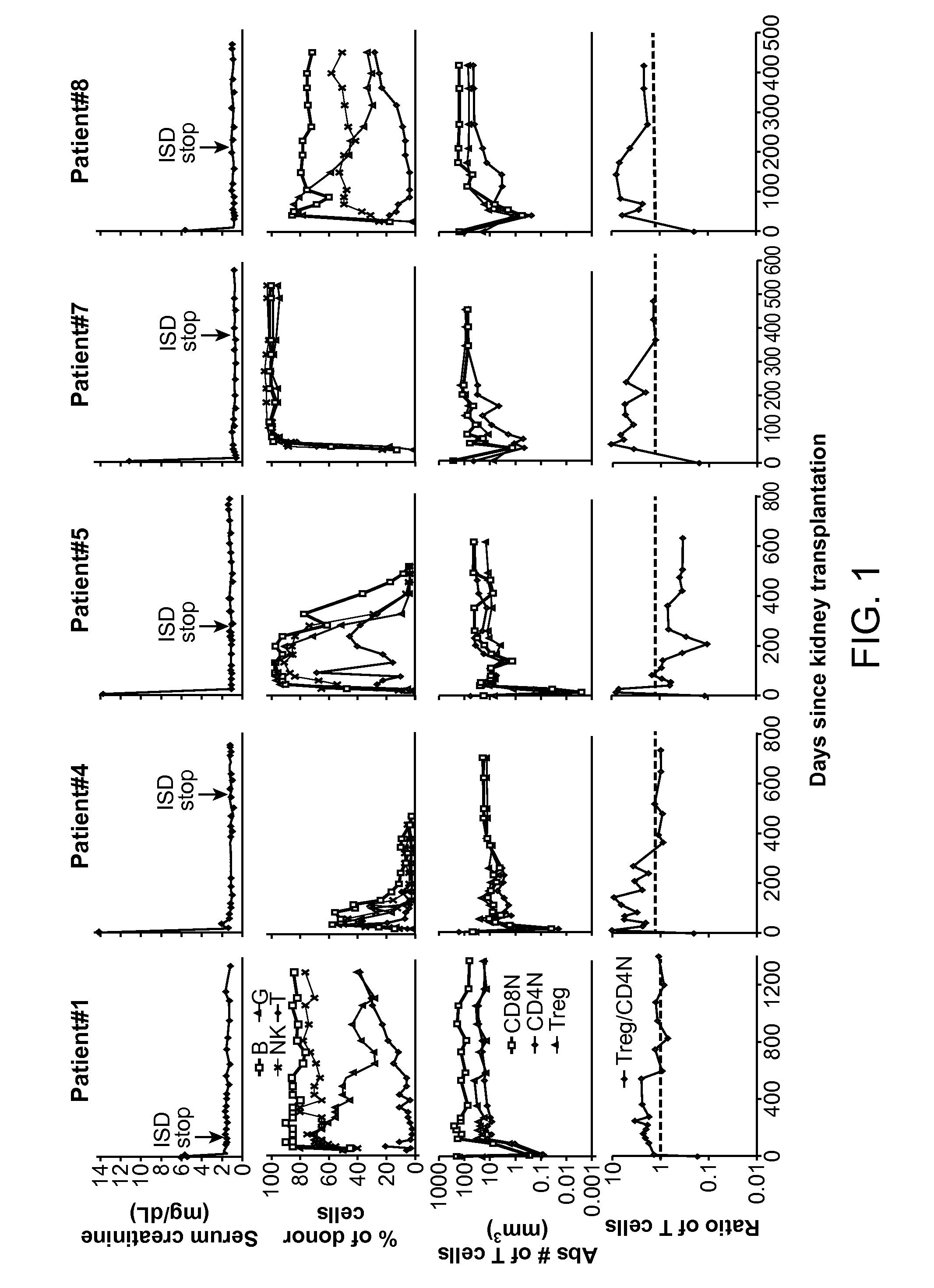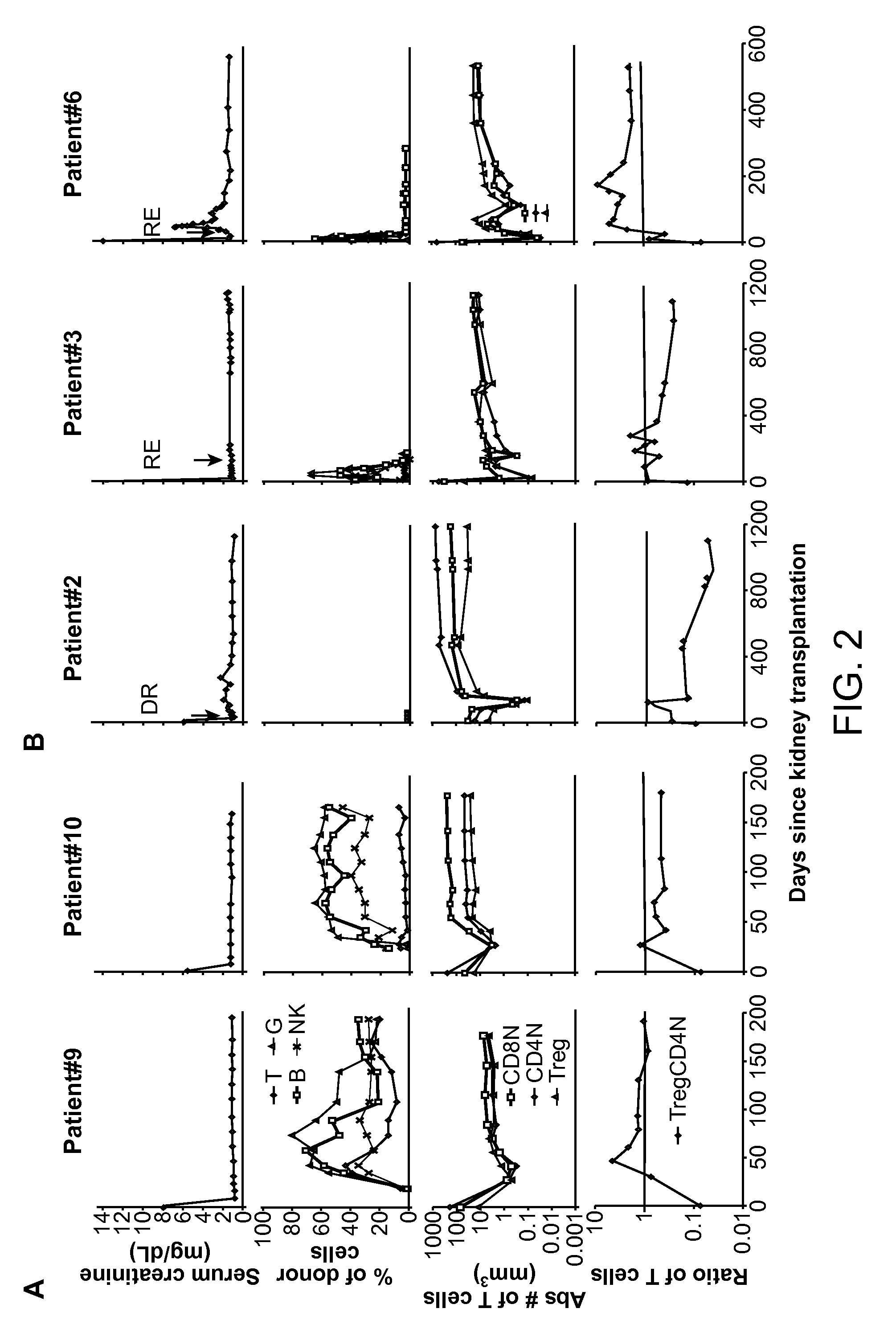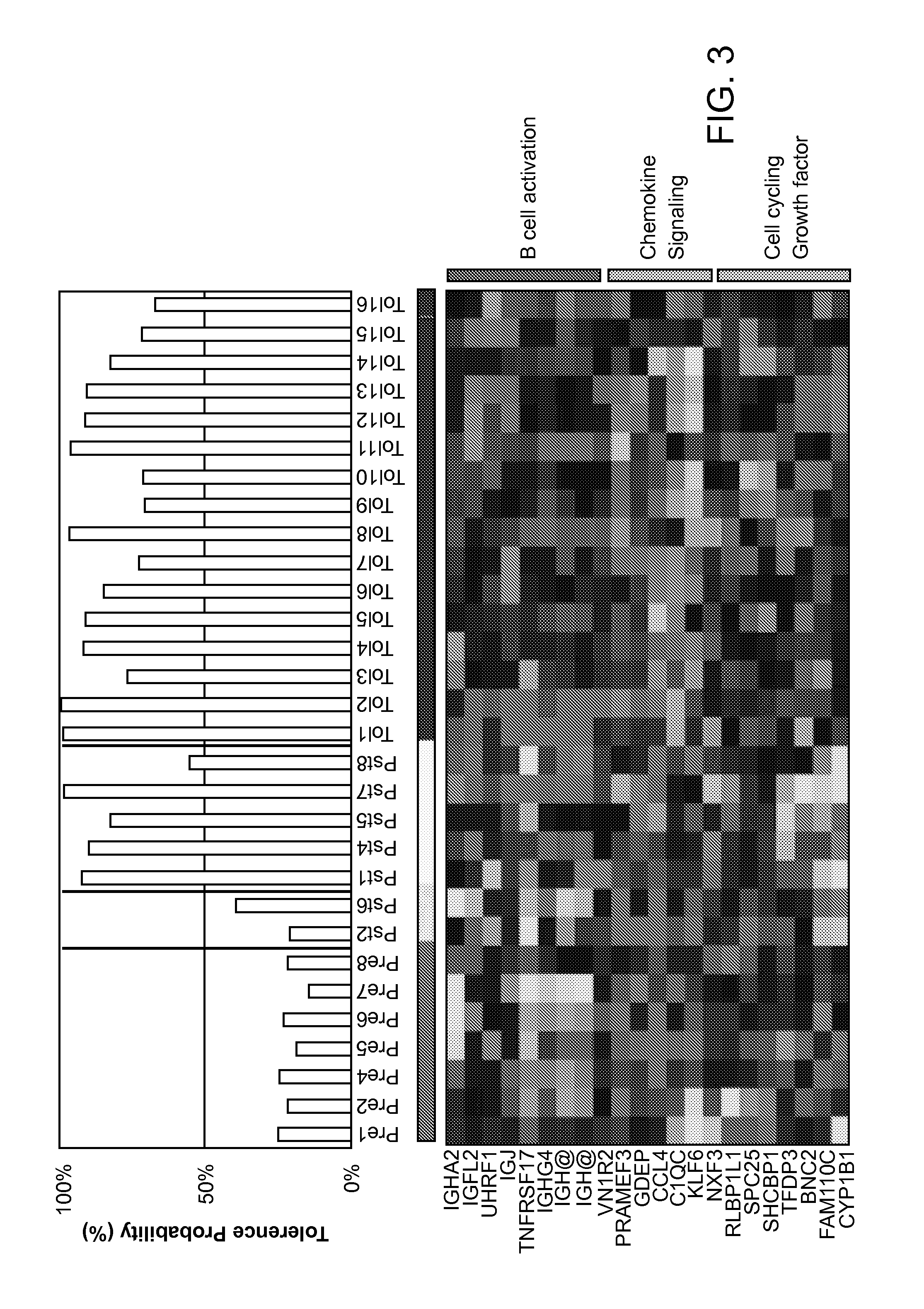Biomarkers for determining an allograft tolerant phenotype
a biomarker and allograft technology, applied in the field of biomarkers for determining an allograft tolerant phenotype, can solve the problems of increased risk of developing neoplastic disease conditions, undesirable side effects of such agents,
- Summary
- Abstract
- Description
- Claims
- Application Information
AI Technical Summary
Benefits of technology
Problems solved by technology
Method used
Image
Examples
example 1
[0068]Recipients of kidney transplants require the lifelong use of immunosuppressive drugs to prevent graft rejection (1, 2). The use of these drugs is associated with a variety of cumulative side effects including increased risks of heart disease, infection, cancer, and diabetes (2-4). Despite the use of these drugs, chronic rejection remains an important problem that results in gradual graft loss (4, 5).
[0069]The induction of immune tolerance can prevent the rejection of grafts without immunosuppressive drugs in a variety of preclinical studies (6-9). A successful approach applied to clinical studies combined organ transplantation with the injection of hematopoietic cells from the donor to achieve stable mixed chimerism (10-13). This approach was used in the current study of kidney transplant recipients who were given total lymphoid irradiation and anti-thymocyte globulin conditioning, and a donor cell injection containing defined doses of highly enriched CD34+ hematopoietic proge...
example 2
[0131]In this Example, gene expression biomarkers for determining a graft tolerant phenotype (TOL) in subjects having a liver transplant are identified.
Methods
[0132]46 unique whole blood samples from 4 demographically matched patient phenotypes were run on Agilent Whole Human Genome 44K microarrays. Patients included: 7 operational tolerant pediatric liver transplant patients who were on no medications for between 9.3 to 17.1 years (P-TOL); 13 patients with biopsy proven acute rejection (AR); 7 patients on low-dose prograf monotherapy / minimal immunosuppression (MIS); and 13 stable patients on dual immunosuppression. Additionally, samples from 6 healthy donors (HD) were also analyzed. Standardized bioinformatic analyses were applied and significant TOL genes were mapped by AILUN to published data on Affymetrix arrays from an operational tolerance study in adult liver transplant recipients (A-TOL; Llordella et al “Multiparameter immune profiling of operational tolerance in liver trans...
PUM
| Property | Measurement | Unit |
|---|---|---|
| temperature | aaaaa | aaaaa |
| temperature | aaaaa | aaaaa |
| pH | aaaaa | aaaaa |
Abstract
Description
Claims
Application Information
 Login to View More
Login to View More - R&D
- Intellectual Property
- Life Sciences
- Materials
- Tech Scout
- Unparalleled Data Quality
- Higher Quality Content
- 60% Fewer Hallucinations
Browse by: Latest US Patents, China's latest patents, Technical Efficacy Thesaurus, Application Domain, Technology Topic, Popular Technical Reports.
© 2025 PatSnap. All rights reserved.Legal|Privacy policy|Modern Slavery Act Transparency Statement|Sitemap|About US| Contact US: help@patsnap.com



